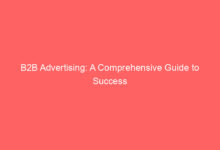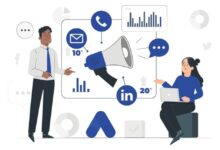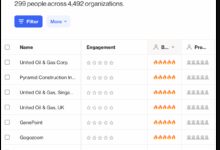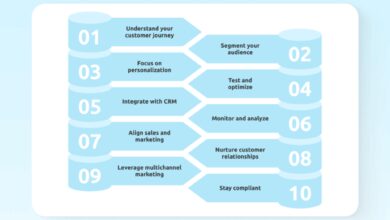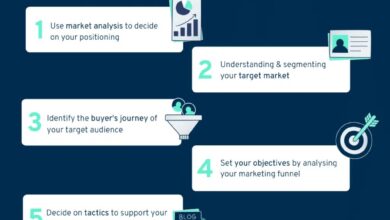B2B Digital Marketing: 7 Proven Strategies to Dominate 2024
In today’s hyper-connected world, b2b digital marketing isn’t just an option—it’s a necessity. Whether you’re scaling a startup or optimizing an enterprise, mastering digital channels can make or break your growth trajectory.
1. Understanding the Core of B2B Digital Marketing

B2B digital marketing refers to the strategies and tactics businesses use to promote their products or services to other businesses through online channels. Unlike B2C marketing, which often appeals to emotions and immediate purchases, b2b digital marketing focuses on logic, ROI, and long-term value.
What Sets B2B Apart from B2C?
The fundamental difference lies in the buyer’s journey. In B2B, decisions are made by committees, involve longer sales cycles, and require more educational content. A single purchase can impact an entire organization, so trust and credibility are paramount.
- B2B buyers are professionals seeking solutions, not impulse purchases.
- Sales cycles can last months or even years.
- Content must be data-driven, informative, and highly targeted.
Key Objectives of B2B Digital Marketing
The primary goals include lead generation, brand authority building, customer retention, and nurturing long-term relationships. According to HubSpot, 63% of companies prioritize lead generation as their top marketing goal.
- Generate high-quality, sales-ready leads.
- Position your brand as an industry thought leader.
- Support the sales team with marketing-qualified leads (MQLs).
“Marketing is no longer about the stuff you make, but the stories you tell.” – Seth Godin
2. Building a High-Performance B2B Digital Marketing Strategy
A successful b2b digital marketing strategy is not a collection of random tactics—it’s a cohesive plan aligned with business goals, buyer personas, and measurable KPIs. Without a strategy, even the best tools and content will underperform.
Define Clear Goals and KPIs
Start by asking: What do you want to achieve? Increased leads? Higher conversion rates? Better customer retention? Set SMART goals (Specific, Measurable, Achievable, Relevant, Time-bound).
- Example: Generate 500 marketing-qualified leads per quarter.
- Track KPIs like cost per lead (CPL), lead-to-customer conversion rate, and customer lifetime value (CLV).
- Use tools like Google Analytics and HubSpot to monitor progress.
Map Your Buyer’s Journey
Understanding the stages your prospects go through—awareness, consideration, and decision—is critical. Each stage requires different content and messaging.
- Awareness Stage: Prospects realize they have a problem. Use blog posts, infographics, and social media to educate.
- Consideration Stage: They’re evaluating solutions. Offer whitepapers, webinars, and case studies.
- Decision Stage: They’re ready to buy. Provide demos, free trials, and testimonials.
3. Mastering Content Marketing in B2B Digital Marketing
Content is the backbone of b2b digital marketing. It builds trust, drives organic traffic, and nurtures leads through the funnel. But not all content is created equal—quality and relevance are key.
Create Educational and Problem-Solving Content
B2B buyers are researchers. They consume an average of 13 pieces of content before making a decision, according to Content Marketing Institute. Your content must answer their questions and solve their pain points.
- Write in-depth blog posts on industry challenges.
- Develop how-to guides and troubleshooting manuals.
- Produce comparison content (e.g., “Tool A vs. Tool B”).
Leverage Long-Form Content and Thought Leadership
Long-form content (2,000+ words) ranks better on search engines and establishes authority. It also increases time-on-page, a key SEO signal.
- Publish comprehensive guides (e.g., “The Ultimate Guide to Cloud Security”).
- Write bylined articles for industry publications.
- Host expert roundtables or panel discussions.
“Content marketing is the only marketing left.” – Seth Godin
4. SEO: The Foundation of B2B Digital Marketing Success
Search engine optimization (SEO) is non-negotiable in b2b digital marketing. Over 70% of B2B buyers start their journey with a search engine, making visibility crucial.
Keyword Research for B2B Audiences
Use tools like Ahrefs, SEMrush, or Moz to identify high-intent keywords. Focus on long-tail phrases that reflect specific pain points.
- Target phrases like “best CRM for small manufacturing firms” instead of just “CRM software”.
- Look for buyer-intent keywords: “compare”, “review”, “pricing”, “demo”.
- Optimize for voice search with natural language queries.
On-Page and Technical SEO Best Practices
Ensure your website is fast, mobile-friendly, and structured properly. Google rewards sites that offer a seamless user experience.
- Use header tags (H1, H2, H3) to structure content.
- Optimize meta titles and descriptions with keywords.
- Fix broken links and improve site speed using tools like Google PageSpeed Insights.
5. Harnessing Social Media in B2B Digital Marketing
While social media is often associated with B2C, it’s a powerful tool in b2b digital marketing when used strategically. Platforms like LinkedIn, Twitter, and even YouTube can drive engagement and brand awareness.
LinkedIn: The B2B Social Powerhouse
LinkedIn is the go-to platform for B2B professionals. With over 900 million users, it’s where decision-makers spend their time.
- Optimize your company page with clear messaging and CTAs.
- Post industry insights, company updates, and employee spotlights.
- Use LinkedIn Ads to target specific job titles, industries, and company sizes.
Engage Through Video and Live Content
Video content is highly engaging and shareable. Use it to explain complex products, showcase customer success stories, or host live Q&A sessions.
- Create short explainer videos for product features.
- Host LinkedIn Live sessions with industry experts.
- Repurpose webinar recordings into YouTube content.
6. Email Marketing: The Silent Revenue Driver in B2B Digital Marketing
Email remains one of the highest ROI channels in b2b digital marketing. According to the Data & Marketing Association, email delivers $42 for every $1 spent.
Segmentation and Personalization
Generic emails don’t work. Segment your audience based on behavior, industry, or stage in the buyer’s journey.
- Send onboarding emails to new leads.
- Deliver case studies to prospects in the consideration phase.
- Use dynamic content to personalize subject lines and body text.
Automated Drip Campaigns
Set up automated email sequences to nurture leads over time. These campaigns keep your brand top-of-mind without manual effort.
- Launch a 5-part nurture series after a whitepaper download.
- Trigger follow-ups based on website behavior (e.g., abandoned demo sign-up).
- Use tools like Mailchimp, ActiveCampaign, or HubSpot for automation.
“Email is the backbone of digital marketing.” – Neil Patel
7. Measuring Success: Analytics and Optimization in B2B Digital Marketing
You can’t improve what you don’t measure. Analytics provide insights into what’s working and what needs adjustment in your b2b digital marketing efforts.
Key Metrics to Track
Focus on metrics that reflect business outcomes, not just vanity numbers.
- Lead Conversion Rate: Percentage of visitors who become leads.
- Cost Per Lead (CPL): How much you spend to acquire each lead.
- Customer Acquisition Cost (CAC): Total marketing and sales cost to acquire a customer.
- Return on Ad Spend (ROAS): Revenue generated per dollar spent on ads.
A/B Testing and Continuous Improvement
Never assume—always test. A/B testing helps you optimize everything from email subject lines to landing page designs.
- Test two versions of a landing page to see which converts better.
- Experiment with different CTAs, colors, and copy.
- Use Google Optimize or Optimizely for advanced testing.
8. Emerging Trends Shaping the Future of B2B Digital Marketing
The b2b digital marketing landscape is evolving rapidly. Staying ahead requires awareness of emerging trends and technologies.
AI and Automation in B2B Marketing
Artificial intelligence is transforming how marketers personalize content, predict behavior, and scale outreach.
- Use AI-powered chatbots for 24/7 lead qualification.
- Leverage predictive analytics to identify high-value prospects.
- Implement AI-driven content recommendations on your website.
Account-Based Marketing (ABM)
ABM flips traditional marketing by targeting specific high-value accounts with personalized campaigns.
- Identify target accounts based on firmographics and intent data.
- Create custom content and landing pages for each account.
- Align sales and marketing teams for coordinated outreach.
9. Integrating Sales and Marketing for Maximum Impact
One of the biggest challenges in b2b digital marketing is the gap between sales and marketing teams. When aligned, they can dramatically increase conversion rates and revenue.
Develop a Service Level Agreement (SLA)
A formal SLA defines expectations between marketing and sales, such as how many leads marketing will deliver and how quickly sales will follow up.
- Set clear lead qualification criteria (e.g., MQL vs. SQL).
- Agree on response times (e.g., contact leads within 5 minutes).
- Review performance monthly to ensure accountability.
Use Shared Tools and Data
Break down silos by using integrated platforms like CRM systems (e.g., Salesforce, HubSpot) that both teams can access.
- Track lead behavior from first touch to close.
- Share customer insights and feedback across departments.
- Use shared dashboards for real-time performance monitoring.
10. Overcoming Common B2B Digital Marketing Challenges
Even the best strategies face obstacles. Recognizing and addressing these challenges early can save time and resources.
Challenge: Long Sales Cycles
B2B sales cycles are inherently long. The key is consistent nurturing.
- Use drip campaigns to stay top-of-mind.
- Provide value at every touchpoint, not just sales pitches.
- Track engagement to identify warm leads.
Challenge: Measuring ROI
Proving marketing’s impact on revenue can be difficult, especially with long cycles.
- Implement multi-touch attribution models.
- Use UTM parameters to track campaign performance.
- Align marketing KPIs with sales outcomes.
What is b2b digital marketing?
B2B digital marketing refers to the use of online channels—such as websites, search engines, social media, email, and content—to promote products or services from one business to another. It focuses on building relationships, generating qualified leads, and supporting long sales cycles with data-driven strategies.
What are the most effective b2b digital marketing channels?
The most effective channels include SEO, content marketing, LinkedIn, email marketing, and paid advertising (especially on LinkedIn and Google). The best approach combines multiple channels in an integrated strategy tailored to your audience.
How do you measure the success of a b2b digital marketing campaign?
Success is measured through KPIs like lead conversion rate, cost per lead, customer acquisition cost, and return on ad spend. Using analytics tools and CRM integration helps track performance across the buyer’s journey.
What role does content play in b2b digital marketing?
Content is central to b2b digital marketing. It educates buyers, builds trust, improves SEO, and nurtures leads. High-quality, relevant content—such as whitepapers, case studies, and webinars—drives engagement and supports decision-making.
How important is SEO in b2b digital marketing?
SEO is critical. Over 70% of B2B buyers start with a search engine. Optimizing your website and content for relevant keywords ensures visibility, credibility, and a steady stream of organic leads.
Mastering b2b digital marketing requires a strategic blend of content, technology, data, and human insight. From understanding the buyer’s journey to leveraging AI and aligning sales with marketing, success lies in consistency, measurement, and continuous improvement. The businesses that thrive in 2024 will be those that treat b2b digital marketing not as a cost center, but as a growth engine.
Further Reading:
